Sapphire Radeon R9 290 Tri-X OC Review: Our First Custom Cooled 290
by Ryan Smith on December 24, 2013 3:45 PM EST- Posted in
- GPUs
- AMD
- Radeon
- Sapphire
- Radeon 200
Gaming Performance
Diving into our performance benchmarks, we’ll be running light on the commentary here due to the fact that there’s really not much to say about the gaming performance of the 290 Tri-X OC. Sapphire’s 6% core overclock and 4% memory overclock translates into a real world performance difference of 3% on average. This makes the 290 Tri-X OC a bit faster than a reference 290, but it doesn’t otherwise change the relative rankings of various cards. At most this slightly extends the lead over the GTX 780 to 9% and wipes out the 290X quiet mode’s marginal lead over the 290.
In the end the difference is slight enough that the bulk of the interest in this card should rightfully be on the card’s cooler, and ultimately whether that cooler justifies the $50 premium.

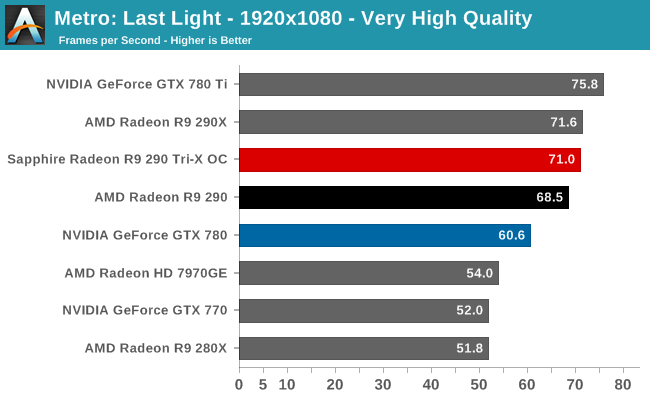
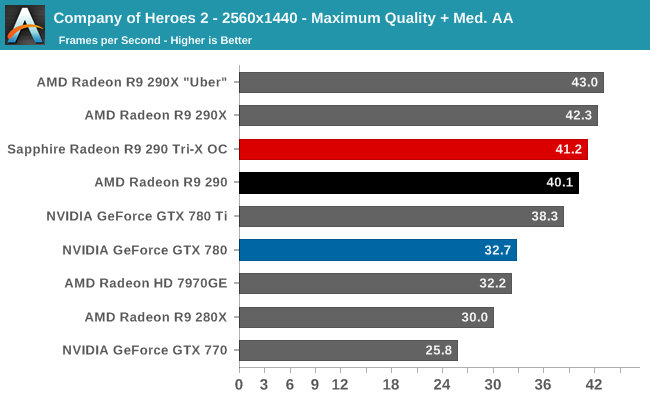
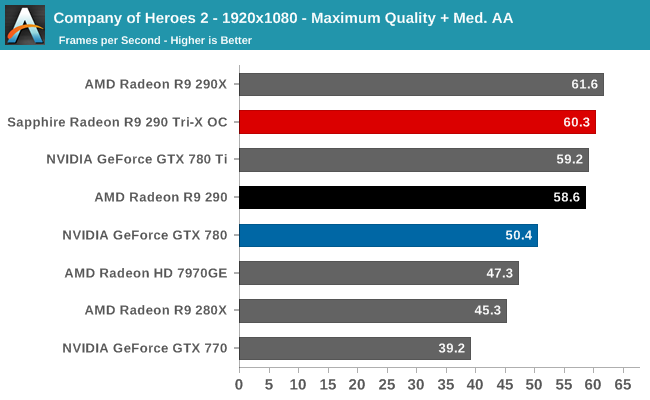
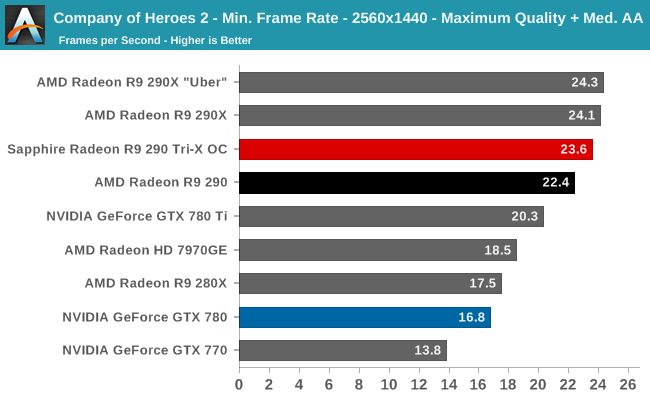
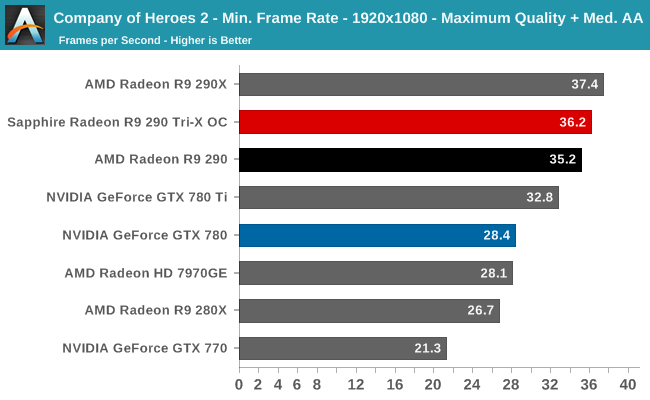
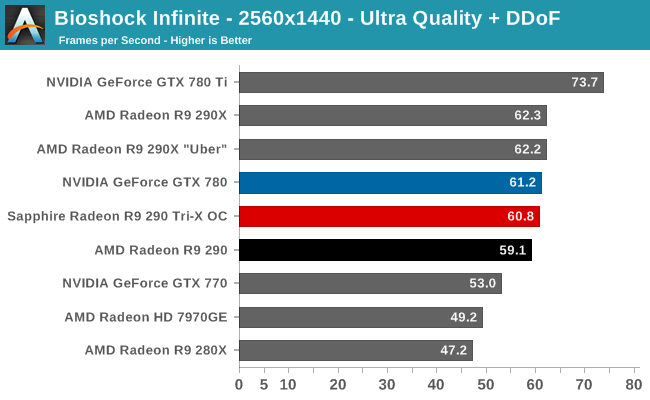
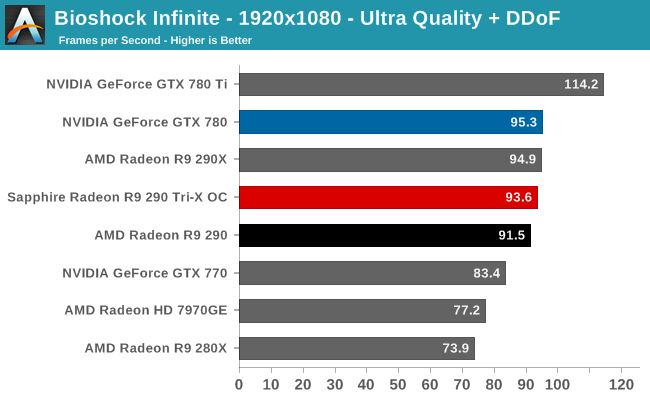
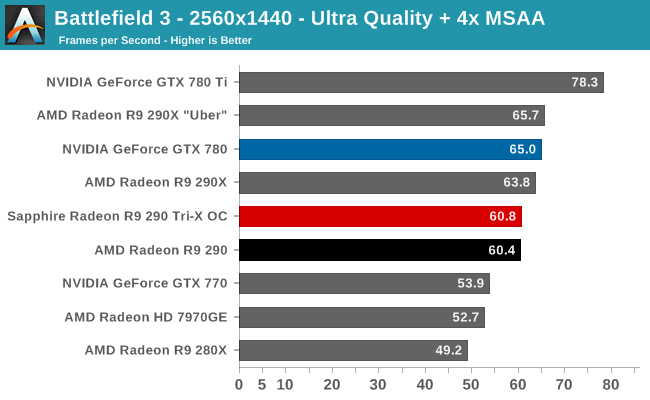
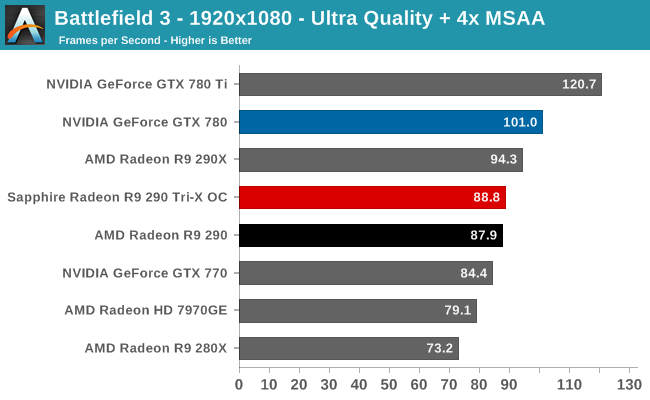
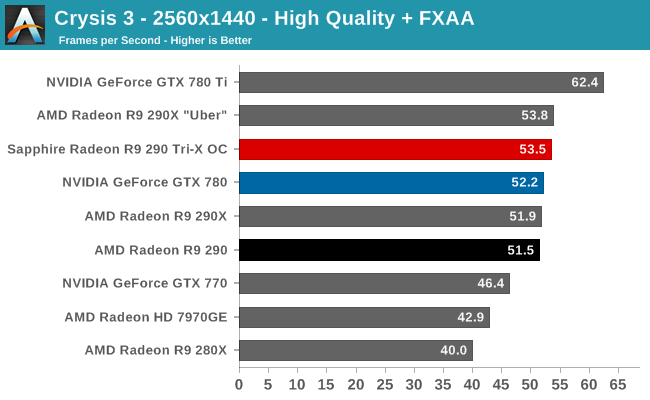
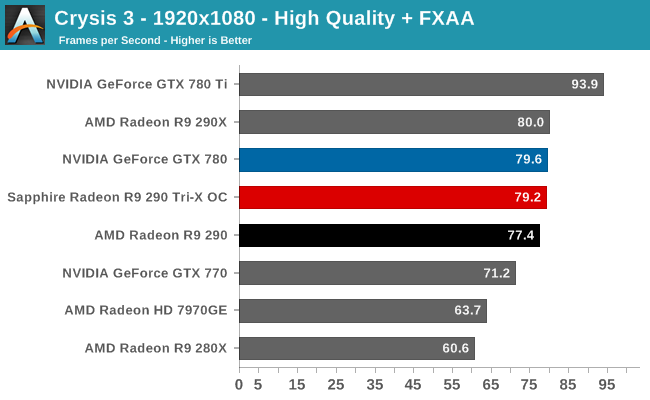
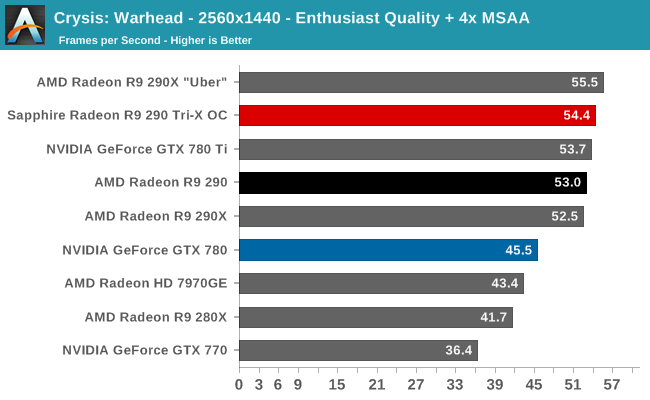
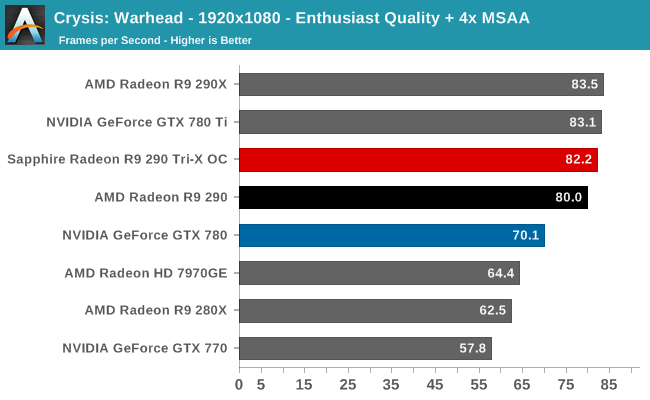
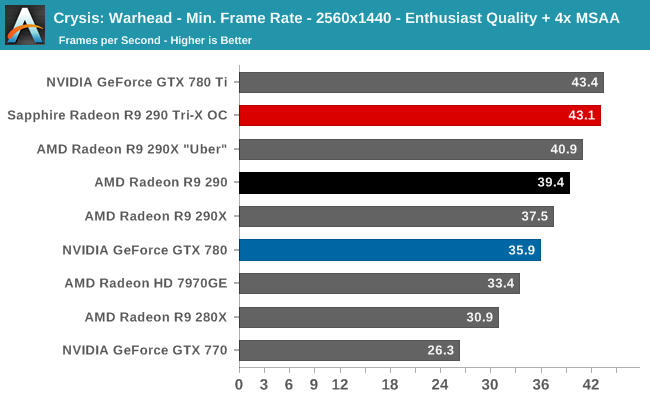
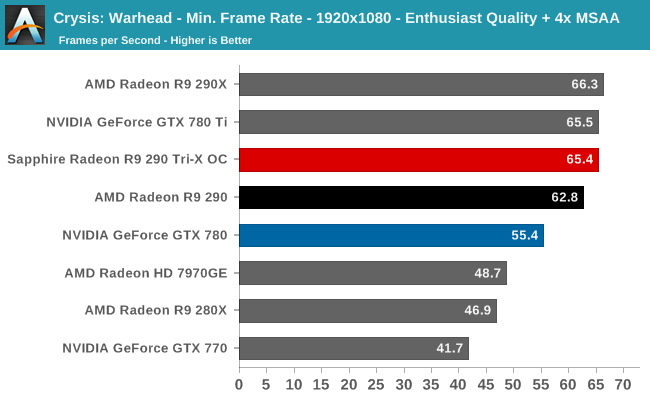
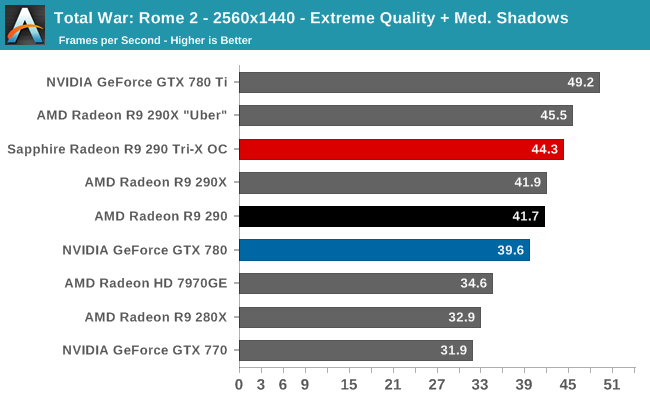
On a quick note looking at Rome, as one of the games the 290X throttles in the most, this is also the game where the Sapphire 290 Tri-X OC takes the largest lead over the 290X. The 6% performance lead here reflects on the fact
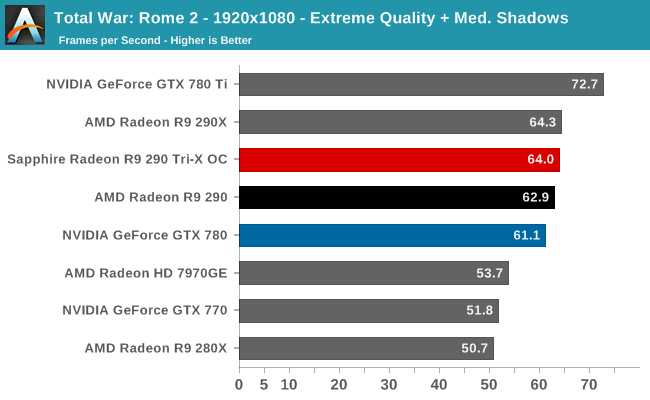
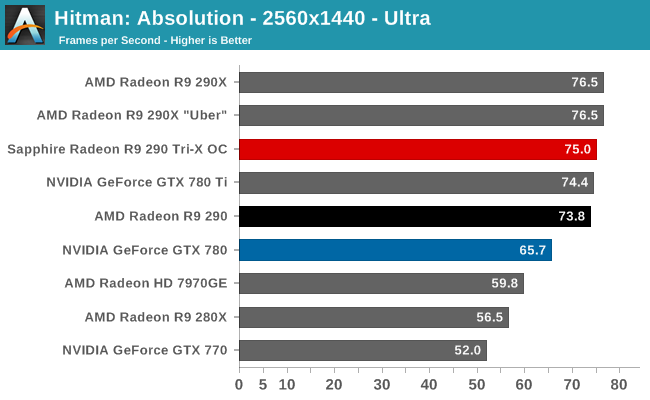
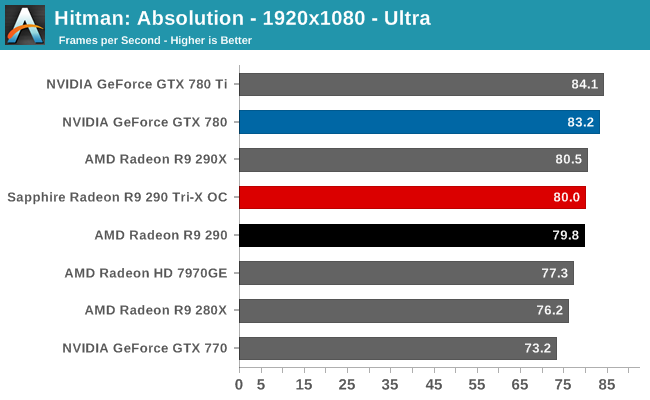
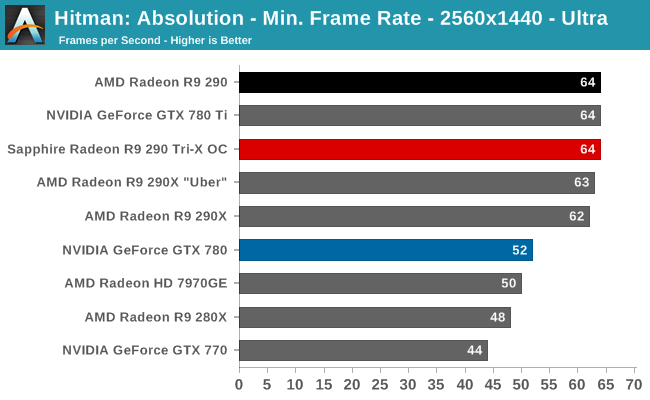
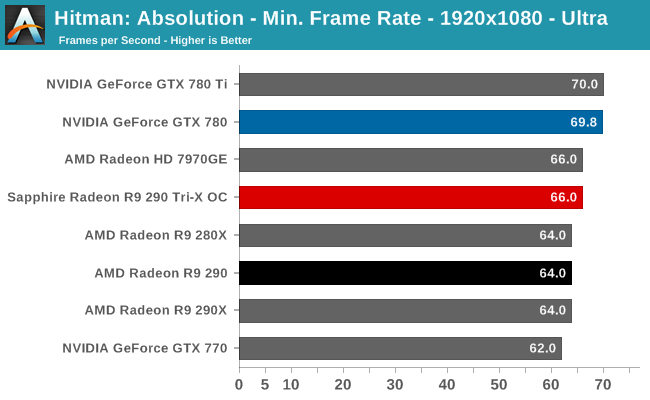
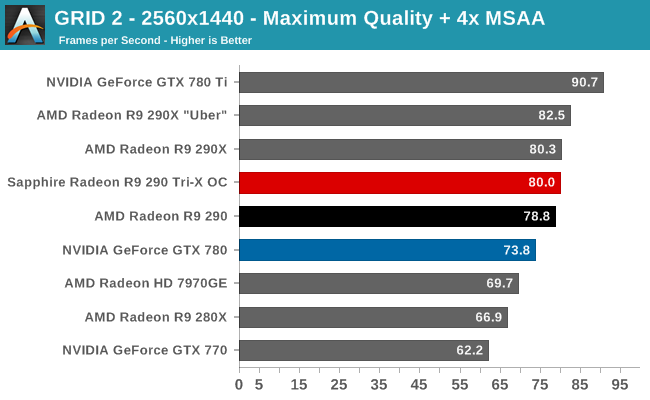
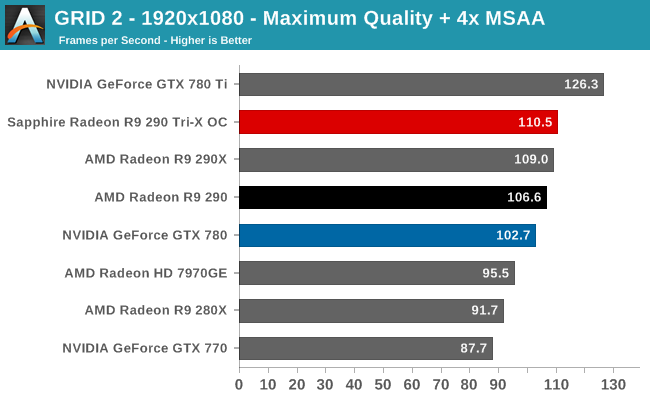










119 Comments
View All Comments
Mondozai - Wednesday, December 25, 2013 - link
("That Ryan applied on this Sapphire 290", it should say at the end.)blanarahul - Wednesday, December 25, 2013 - link
Hexus.net are liers. Look at their Noise charts. Tri-X 290 is louder than a 780 Ti. Look at Anandtech or Computerbase.de, 290 Tri-X is quieter than 780 Ti.Mopar63 - Wednesday, December 25, 2013 - link
calling them liars might be harsh. There is no standardization in the review industry when it comes to how noise level is measured. Some use open bench and others use cases. The cases can vary with each model and then there is the fact that hardware and software used to measure can vary as well. Add to this the measuring methodology such as distance from the item as well as how ti was set to run, did they measure 100% speed, game play speeds, auto or set and so on.Bobs_Your_Uncle - Sunday, December 29, 2013 - link
Then there's always the question: are they recording the dB(A) measurements on a Metric scale or on an Imperial scale? : /bigboxes - Sunday, December 29, 2013 - link
LOLsheh - Wednesday, December 25, 2013 - link
I still don't understand why reference designs use blowers. Isn't that mainly useful for small cramped cases? Don't most users have a well-spaced case, and especially the users who go for high-end cards, and so are better served with an open air cooler?blanarahul - Wednesday, December 25, 2013 - link
These open air coolers dump heat/hot "inside" the case/cabinet. This has a negative impact on CPU, RAM, Chipset, HDD etc. temperatures (usless you are using a super tower). Blowers throw the hot air out the case and hence has no impact on other components.Open air coolers make a lot of sense for Open Air test benches though.
Mopar63 - Wednesday, December 25, 2013 - link
The impact of an open air cooler is a lot less on the systems internals than many think. The heat released is not a direct increase but rather like adding hot water to cooler water. The water is not suddenly hot, just a bit warmer. Also even mid and most mATX towers are moving more than enough air to make this a minor effect at best. In fact MANY of the mITX cases we are seeing for gaming rigs can handle it easily as well.Godigy - Wednesday, December 25, 2013 - link
Not necessarily. I had an R9 290 with the Gelid Icy aftermarket cooler, and if I didn't take the side panel off of my case, it would really make stuff in the case hot. My CPU temps jumped 10C with the side panel closed. If I were to open the side panel, I could feel the heat coming out of my case, which has very good airflow.Mayuyu - Wednesday, December 25, 2013 - link
I have one of these open air GPUs and I really don't like the design. The GPU board is so tall that it essentially creates another compartment in the case. Since the fan faces downward, all the heat is in the bottom of the case. The big fan at the back of the case only moves air for the CPU and RAM.